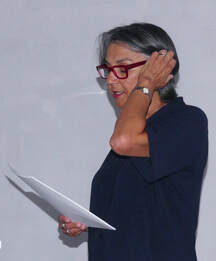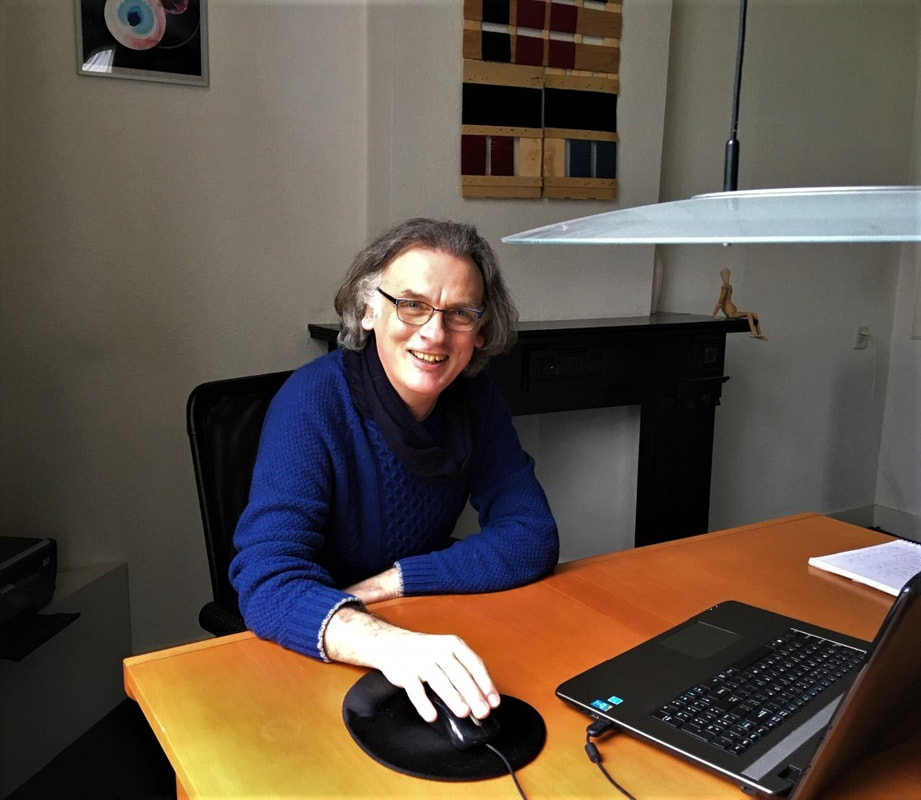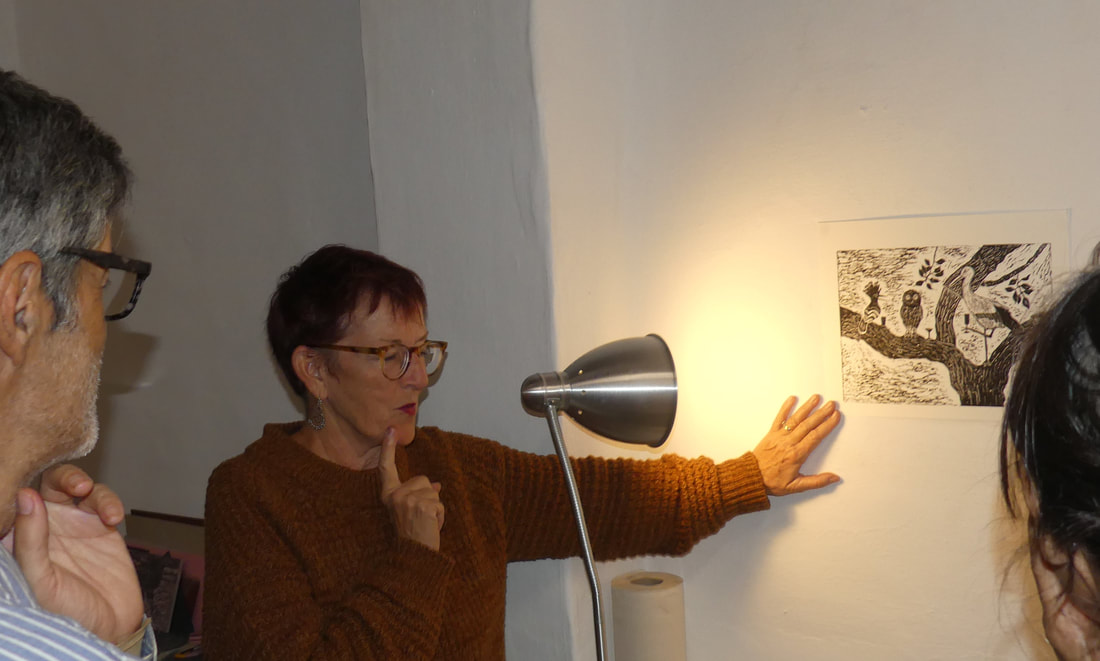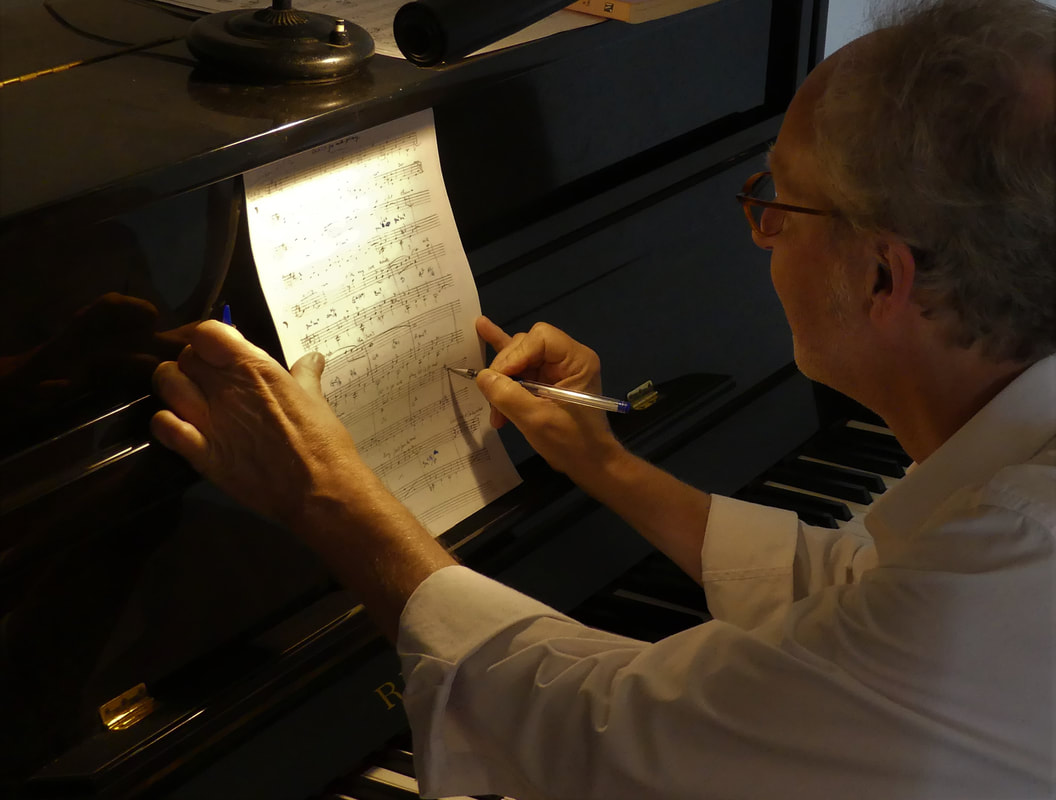This page shows residents and their projects in 2022.
most recent residents and their projects are in the newsletter.
Other pages show residents and their projects in 2021, 2020, 2019, 2018, 2017, 2016, 2015, 2014, 2012 and 2013 and 2004-2011.
A visual collage of residents is in this slide show.
most recent residents and their projects are in the newsletter.
Other pages show residents and their projects in 2021, 2020, 2019, 2018, 2017, 2016, 2015, 2014, 2012 and 2013 and 2004-2011.
A visual collage of residents is in this slide show.
|
After their highly success exhibition in Évora, Portugal in April, Sherry Wiggins (USA) and Luís Branco (Portugal) had a residency in October at OBRAS-Holland. They were working on a long-term project: Heroines. In this project Sherry embodies a series of heroines, both fictional and historical, and Luís photographs Sherry while she is performing. Eve, Salome, Aphrodite and Helen of Troy have been done and more will follow. Sherry immerses herself in these women and revises them in her own visage in performative still photographs. This year the subject was the legend of Judith, beheading Holofernes (thereby the Israelites defeating the Assyrians).
Sherry used a painting of Artemisia Gentileschi’s (1593-1656) as a reference. Artemisia was a “me too” woman avant la lettre, and the legend of Judith has obvious feminist elements. On 10 September we had a great Open Studio at OBRAS in Evoramonte. The participating artists were Jane Flett, Sophie Tassignon, Iuliia Bugalova, Michael O`Boyle,Stella Whalley and James Bell. Below are their artist statements in blue.
Jane Flett is a Scottish novelist and poet based in Berlin.
Her fiction has been commissioned for BBC Radio 4, Highly Commended in the Bridport Prize, and published in Electric Literature. She’s the author of the chapbooks "Quick, to the Hothouse" and "Mashnotes", and her poetry has been anthologised in the Best British Poetry. Jane is also one half of the riot-grrrl band Razor Cunts, a creative writing tutor for The Reader Berlin, and a disturbingly accurate tarot reader. When she’s not writing, you’ll find her swimming naked in lakes, hosting queer events, and rollerskating down Tempelhof runway in hotpants. At OBRAS, she’s working on: 1. A novel about a feminist goddess cult that arises during an environmental apocalypse. The book explores the difficulty of creating a non-hierarchical society and the repercussions of whole-hearted commitment to chaos. 2. An experimental novella about a woman lost in the wilderness, consisting of 100 chapters of 100 words, and inspired by classic fable forms. It’s rooted in Scottish mythology but undermines the patriarchal heritage of the original tales. 3. A weird short story about a quarantine facility for patients infected with “the Earworm”. Over the past 20 years, Sophie Tassignon has been working on several musical collaborations in the jazz and avantgarde scene. She has also developed a unique style of voice layering to create tantalizing sound textures which she used in theatre pieces and her debut solo album (RareNoise Records, 2020).
She is currently crafting a new series of sounds during her residency at OBRAS foundation. With these new sonic tapestries, she will create a palette of textures she can use to improvise in a live setting, preparing for her solo performance in 2023 at the New York City Electroacoustic Improvisation Summit. Iuliia Bugalova is a Ukrainian multimedia artist. During her stay at OBRAS she concentrated on working with a traditional artistic medium - oil painting on canvas.
She feels attracted to those non-verbal elements that can describe her experience of existence with all her senses. Her work can be seen as an attempt to transform it to the visual language of colors and form. At OBRAS she was inspired by the red colors of the soil, the shapes of deformed trees, the sounds of a pig farm mixed with Symphony#7 by Beethoven and swimming with open eyes. As part of the Open Studio, Iuliia did a action painting performance, in interaction with singing by Sophie. A video compilation will soon be ready.
Michael O'Boyle is a painter based in the west of Ireland. For his residency, he is creating three monumental geometric wall works in paper along with some smaller canvas works. These microscopic based works are diagrammatic in nature and work with the architecture of the studio to create giant portraits of the invisible.
Stella Whalley is a multi-disciplinary fine artist working in London, UK.
At Foundation OBRAS Stella created a mysterious character in the landscape using video, sound and performance, which has been shot in collaboration with fellow resident James Bell. Alongside this, Stella experimented with a series of drawings, prints and paintings that reveal figures semi-abstracted within the environment. Stella also produced a series of playfully painted, bleeding blue-ink marble tiles based on historical erotic images found at Estremoz market; as well as local characters and creatures from the area. In the last days of her residency Stella broke her hip (!). She had to stay six more weeks before she could travel home. In this time, she made a series of drawings on marble with pin up girls on crutches. James Bell is a British Artist specialising in painting, performance and film. His work responds to his environment, mental health and Queer identity.
James is also a professional film producer. His film Birthday Boy won the 2021 audience award at BAFTA qualifying Iris Prize Film Festival. At OBRAS he explored two directions. Firstly, abstract paintings responding to the landscape. Initial inspiration came from the red ‘no-hunting’ signs contrasting nature’s palette, and by the bleeding sap of the cork trees. Secondly, James has utilised film, photography and blue-ink drawings to create self-portraits. Placed within various locations in and around the residency - he sits and stares into the distance, or lays peacefully. Rob Monaghan (Ireland) took a dive in a lake of an abandoned marble quarry near to Vila Viçosa, Portugal. He did it for pleasure, but first of all for the art. Rob is working on an exhibition in the Municipal Museum of Estremoz, Portugal (September 2023).
Rob explores human/nature relationships. Recurring themes are ones of belonging, identity, place/time combinations and human intervention with the natural environment. Rob had artistic residencies at OBRAS-Portugal in 2017, 2018 and 2019. A selection of his findings were exhibited in the Damer House, Tipperary, Ireland (2017), the Babyforest woodlands in West Cork, Ireland (2018) and the Galeria do Palaçio Barrocal, Evora, Portugal (2019). During his residencies, Rob established long-term collaborations with other artists, resulting in presentations in various galleries and screening environments in Sweden, USA and Ireland. After his trip in January, Rob returned for a short orientation visit in April. He is scheduled to have an exhibition in 2023 in the Galeria de D. Dinis of the museum of Estremoz. But after having seen the exhibition space in the fortress of Evoramonte he very much prefers that space over the Galeria de D. Dinis and requested us to propose the museum to shift his exhibition to there. He will create some multimedia installations.
Rob also found the time to do a collaborative project with Ingrid Simons: Ingrid dripped Chinese ink in a quarry lake and Rob recorded the result from under water. It caused a pattern of black, grey and white that very much reminds to the brush strokes in Ingrid´s oil paintings. Esmeralda Cabral (Canada) came back to work on her second book. It is about her personal feelings of having two motherlands or may be, having no motherlands. She grew up on the Azores (Portugal), but lives in Vancouver (Canada). She always feel that is belongs to the land where not is. She contemplates on nostalgia (or better on the Portuguese version: Saudade) and on the impact of globalism on these feelings, but also on food and weather.
Aurélie Ferrière (France, living in Sweden) has a classical violin education and applied her skills in classical orchestras, a punk and bands and more recently in sound scapes created with a modular synthesizer. But the talents and experiences of Aurélie are also in opera staging, scenography, graphics and video. One goal of her residency was to contemplate on whether she should focus on one discipline or approach her various creations as a whole. Another activity was “Boca” (Portuguese for voice). She made a collage on a canvas in the middle of which she burned an opening (suggesting fire is coming out of a mouth) that was partly stitched to close the opening. In addition, she had impressive jam sessions, both solo and in combination with others, in a wide variety of spaces: in the middle of nature, the big hall, the circular square, the patio, the swimming pool and a marble quarry.
Emma van Meyeren (Holland) is an emerging writer. Recently she wrote an essay on mourning. At OBRAS she was working on a novel. She took two female characters from two highly successful books, one from the 60th and the other from the 80th. Emma is of the opinion that both books are in essence highly sexist and that the two female characters are severely underexposed. In Emma´s novel the two women meet each other and get an affair.
Ingrid Simons (Holland) was scheduled to have an exhibition in the prestigious Galeria D. Dinis of the Municipal Museum of Estremoz first. Due to Covid it had to be postponed twice, but this year it finally happens. The exhibition ran until 25 June.
Ingrid began her career painting church interiors and urban landscapes, and later focused on nature. When she started her annual residencies at OBRAS in 2010, she adapted her approach. Although she was still seeking what a landscape awakens in her and what makes a landscape sublime, she increasingly felt that the raw nature of Alentejo became a part of her being. She shifted from interpreting nature to experiencing nature: connecting with its pureness and power, and taking time to submerge. As a result, she now paints more intuitively. Her landscapes have become more abstract in form and colour. Due to this freedom, she has found the richness in cloudy skies, in mirroring water, and in the colours of dusk. Her fascination with human/nature relationships has manifested in work inspired by artificial lakes in abandoned marble quarries where nature reclaims the manmade space. This subject is shown in a number of paintings and ceramic works in this exhibition. See this page for info on Ingrid Simons at OBRAS over the past 10(!) years. On 14 September, after more than 100 days of drought, we got rain. Lots of rain, and fantastic rainbows, one of them just above our house. (Fotos by Florian Leitner).
THE MIRROR BETWEEN US was an exhibition with an overview of collaborative work of Sherry Wiggins and Luís Branco. Luís Branco made highly intriguing photos of Sherry Wiggins in the landscape surrounding the OBRAS Centre. The exhibition closed on 4 June and attracted nearly 4000 visitors. The slide show gives an impression of both the exhibition and the inauguration.
The exhibition contemplated on aging, human-nature relation and beauty. The art work fitted perfectly well in the baroque atmosphere of the S. Vicente church. The opening event on 16 April was highlighted by and impressive, short concert by Andreia Vaz on violin. See this page for an impression of the project and links to more background information. Michele Caniato (USA) is composer with a musical base in jazz. He was working on a piece for two voices, marimba and saxophone. He let us listen to the rough computer version: it sounded fascinating and promising.
In addition, he was working on Lincoln's Shoes, a comic opera for five characters (soprano, mezzo-soprano, bass-baritone, tenor and baritone). It is a long-term project that is now near to finalisation. The scene for Lincoln's Shoes is in the Abraham Lincoln Home Museum, where a screening for a docu-drama takes place. The problem is that Lincoln’s double doesn’t show up, resulting in lots of confusion. The opera is sung by five characters: soprano, mezzo-soprano, bass-baritone, tenor and baritone. To get a better idea of the story, Michele let us play (read, not sing) part of the libretto. |
|





















